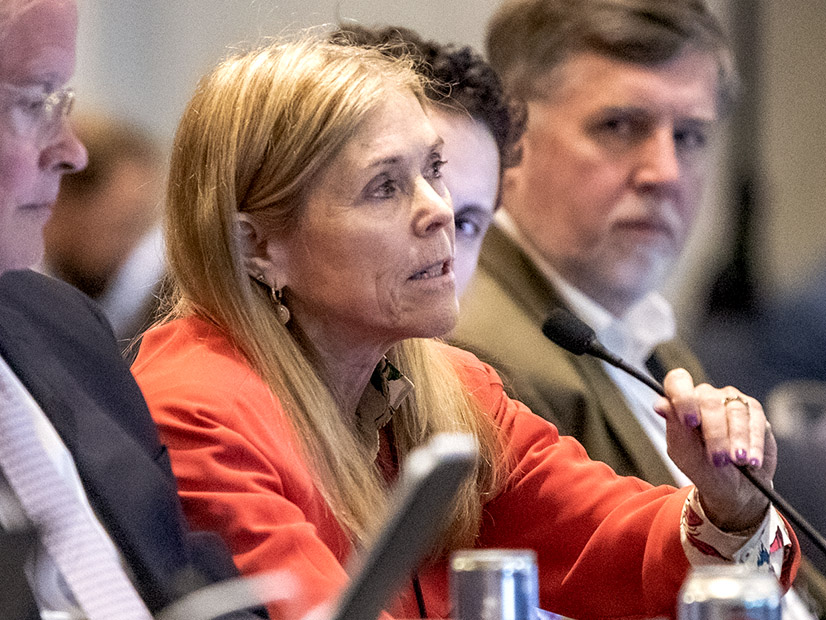
The Markets and Reliability Committee on Thursday endorsed a proposal to reduce penalties for generators that don’t meet their capacity obligations during performance assessment intervals (PAIs).
The package, made by American Municipal Power, redefines the penalty rate and the stop loss limit — the maximum a generator can be penalized in a year — to both be based on the Base Residual Auction (BRA) clearing price. It would also reduce the circumstances under which PJM can declare a PAI.
Both the penalty rate ($3,177/MWh) and stop loss ($142,952/MW-year) are currently based on the net cost of new entry (CONE). AMP’s proposal would reduce them to $394/MWh and $17,744/MW-year, respectively. The change would be effective through the 2024/25 delivery year. (See “Capacity Performance Penalties,” PJM MRC Briefs: April 26, 2023.)
The AMP proposal was one of three before the MRC during a May 4 special meeting, with LS Power and the Independent Market Monitor also making presentations. The subject was brought before the MRC by LS Power through the quick fix process, allowing the issue charge and problem statement to be considered simultaneously with the proposed rule changes. The Members Committee is set to consider endorsement of the AMP solution on May 11.
The LS Power proposal retained the $3,177/MWh status quo PAI charge rate but set the stop loss limit to twice the BRA clearing price, or $23,659/MW-year. All three proposals included the same PAI trigger.
Monitor Joe Bowring said LS Power’s proposal would result in the annual limit being reached very quickly, defeating the purpose of the penalties. The IMM’s proposal used the same penalty rate as AMP and the same stop-loss formula as LS Power. It did not receive a vote because AMP’s plan was approved.
According to the sector-weighted vote report, the Electric Distribution sector unanimously opposed the LS Power proposal, which was voted on first, but gave full support to the AMP solution. The Transmission Owner and End Use Customers sectors also gave majority opposition to the LS Power package and supported AMP.
During a May 1 special MRC meeting, LS Power’s Marji Philips said her company’s proposal was a compromise between PJM’s desire to have a higher penalty rate and the goal of many stakeholders of limiting when PAIs can be called and lowering the annual penalty cap. Philips said she would support any of the three options over the status quo, arguing that generators wouldn’t invest in PJM if they were subject to a penalty rate that could wipe out years of capacity market revenues.
PJM General Counsel Chris O’Hara said the RTO strongly preferred the LS Power proposal, largely because it has the highest penalty rate of the three.
“We feel that from an economic perspective and from a legal challenge perspective that if we are going to do something for these two years, we are much more comfortable leaving the penalty rate where it is,” he said during the May 4 meeting.
Reviewing penalty claims from the December 2022 winter storm, he said the capacity performance construct appears to have properly incentivized many generators to make investments to support their capacity obligations. In many cases, circumstances out of generators’ control impacted their ability to perform, he added, saying it makes a case for reducing the stop loss limit.
American Electric Power’s Brock Ondayko said a filing at FERC seeking to modify the stop loss limit would likely run into challenges that it constitutes retroactive ratemaking. He said generators expected to overperform their capacity obligation may have made offers based on the assumption that they were likely to receive a certain amount in bonuses in a year.
Vitol’s Jason Barker said reducing the penalty rate or stop loss limit effectively shifts the performance risk from a financial risk faced by generators to a reliability risk across PJM. Rather than a separate process addressing penalties for upcoming delivery years, he encouraged stakeholders to vote against all three and instead seek a solution through the ongoing critical issues fast path (CIFP) process. If an interim solution were to go forward, he said one limited to just modifying the PAI trigger would be preferable. (See PJM Stakeholders Refine CIFP Capacity Market Proposals.)


